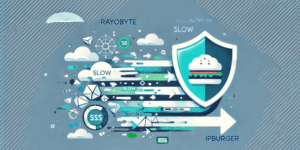Backing up data can be a daunting task to undertake especially when large data is involved. It’s more complicated when you have to decide if you are doing a full, incremental or differential backup, what to delete, what to maintain and when a lot of devices are involved. But that shouldn’t worry you, with the following questions, you will find backing up data an easy peasy task.
Khi nào cần thực hiện sao lưu?
Điều này đề cập đến khung thời gian, khoảng thời gian được chỉ định và thậm chí tần suất mà bạn nên thực hiện sao lưu. Câu trả lời cho câu hỏi này rất đơn giản, hãy sao lưu dữ liệu của bạn thường xuyên nhất có thể. Làm điều đó theo cách thủ công rất mệt mỏi, hầu hết các thiết bị và hệ thống đều hỗ trợ sao lưu tự động và tất cả những gì bạn phải làm là lên lịch đều đặn tùy thuộc vào sở thích của bạn và độ nhạy của dữ liệu. Ngoài ra, bạn nên phục vụ cho các bản sao lưu khẩn cấp.
Bạn nên sao lưu những gì?
In general, you should backup important data from all your devices. That’s your computer, tablet, smartphone, and other devices that you use on a daily basis. The best thing about most of these devices, such as tablets and smartphones is that they come with proprietary cloud storage and if you don’t have vast amounts of data, you shouldn’t worry about the cost. You just need to enable the automatic backup feature and connect to a secure WIFI connection.
 Lưu trữ bản sao lưu của bạn ở đâu?
Lưu trữ bản sao lưu của bạn ở đâu?
Backups can be regarded as a safety precaution in case the main system fails/compromised. This means you should not store your backups in your main system. You should store your back up in an isolated location away from your main system. Depending on your backup, you might want to keep some near your proximity. Backups are mainly stored in secondary storage devices, network attached storage (NAS), and lastly on the Cloud.
- Lưu trữ thứ cấp - Trong kỷ nguyên kỹ thuật số này, có hai loại lưu trữ thứ cấp chính cần xem xét, ổ flash USB và ổ cứng ngoài. Ổ flash USB rất di động và có thể lưu trữ lượng dữ liệu lớn hoặc ít hơn tùy thuộc vào kích thước. Vì nó rất di động, bạn có thể nhanh chóng làm mất nó hoặc thất lạc nó. Nó cũng có thể mất bộ nhớ nếu sử dụng quá nhiều lần. Mặt khác, ổ cứng ngoài có thể di động hoặc cố định, nó cũng lưu trữ một lượng lớn dữ liệu và không dễ bị mất bộ nhớ. Sao lưu được thực hiện thủ công trên các thiết bị này. Hãy cẩn thận để không làm rơi các thiết bị lưu trữ thứ cấp này.
- Network attached storage (NAS) – In a nutshell, this is a specialized computer server or hardware with tons of hard drives which are accessible from a network, hence convenient. With NAS, you can store vast amounts of data, and you can configure automatic backups. NAS has some drawbacks such as it’s expensive, needs to be configured, and it requires a higher level of security.
- Cloud storage – This can be seen as some of NAS, or somebody’s computer that’s is very portable and accessible via the internet. In cloud storage, you need to make sure the cloud provider has implemented proper levels of security and your connection to the cloud is secure.

Đây là phần khó nhất nếu được thực hiện thủ công. Nhưng vì hầu hết các bản sao lưu đều được tự động hóa, hệ thống của bạn có thể làm mọi thứ cho bạn chỉ với các cấu hình phù hợp. Với phần mềm sao lưu, không có gì có thể sai.
Lastly, you should always ensure that your backups are secure regarding storage, transfer, and access. For instance, when accessing your cloud backup/NAS, use a secure tunnel, a VPN connection does the job.


